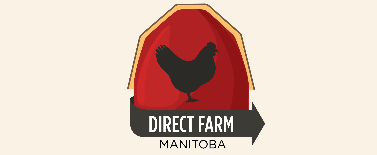The Energy East Pipeline and Manitoba
 Tuesday, January 24, 2017 at 9:32AM
Tuesday, January 24, 2017 at 9:32AM In this article in the series on “A Proposed Path to a New Energy Economy” we focus on the Energy East pipeline going through Manitoba not to Manitoba.
The National Energy Board’s hearings on the TransCanada Energy East pipeline were suspended in August 2016 when the panel resigned under suspicion of compromise. A CIBC bank analyst recently said that the chance of actually building the pipeline is down to 25% from 33% after the National Energy Board panel stepped down. A new 3 member panel was appointed on Jan 9, 2017 so hearings can proceed over next two years, some beginning this fall with a proposed deadline of March 2018. The application is to convert an existing natural gas pipeline to a crude oil pipeline and to construct new sections of the pipeline.
Prime Minister Justin Trudeau recently gave approval to two pipelines: the Kinder Morgan Trans Mountain which will take Alberta oil sands oil to the west coast and the Enbridge line 3 taking Alberta oil sands oil through Gretna to eastern US markets. The question then arises, “Is Energy East still necessary in view of the Kinder Morgan and Enbridge approvals?” According to Steve Belisle, a fund manager at ManuLife Asset Management, the two approvals provide enough capacity for the next 20 years and makes Energy East redundant.
There are two possible roles for the Energy East pipeline. One possible role is to supply eastern Canadians with oil. This is the role implied by TransCanada, the builder of Energy East, on their website. The other possible role is to provide exports from the eastern coast of Canada. This is the role TransCanada states in its application to the National Energy Board.
 The route through Manitoba makes Winnipeg’s water supply vulnerable. The Energy East pipeline will cross the Shoal Lake - Winnipeg Aqueduct at two places. It also crosses the Seine River near Ste. Anne. There are two types of risks associated with the proximity of the pipeline to water. First, a large break in the pipeline could spill millions of liters and second, a chronic undetected leak could contaminate the water supply before anyone is aware of the leak. TransCanada has already altered the route over 100 times and claims it is willing to listen to further suggestions on alternate routes.
The route through Manitoba makes Winnipeg’s water supply vulnerable. The Energy East pipeline will cross the Shoal Lake - Winnipeg Aqueduct at two places. It also crosses the Seine River near Ste. Anne. There are two types of risks associated with the proximity of the pipeline to water. First, a large break in the pipeline could spill millions of liters and second, a chronic undetected leak could contaminate the water supply before anyone is aware of the leak. TransCanada has already altered the route over 100 times and claims it is willing to listen to further suggestions on alternate routes.
If the pipeline is supplying oil to eastern Canadians, then the pipeline might be legitimate because pipelines are safer than rail or truck and domestic oil is to be preferred to foreign oil, but if the pipeline is to provide export capacity then the risks involved provide no benefits to the average Canadian, only to the shareholders of TransCanada (TSX:TRP).
A further question is “Will the approval of the Energy East pipeline delay or cancel any attempt at alternative energy projects or plans?” Many people believe that we need to switch from our dependence on oil to other sources of energy that do not add to the carbon dioxide in the air. In September 2016 the carbon dioxide levels in the atmosphere went over 400 ppm and have not come back down. It is predicted that this will have a significant effect on our climate.
This the third article in a series focusing on “A Path to a New Energy Economy” where we want to introduce the issues around the proposed Energy East pipeline. This pipeline will pass very close to Isle de Chenes, Landmark and Ste. Anne. The series will conclude with a free public lecture about the proposed pipeline on February 15, 2017 at the Jake Epp Public Library.



Reader Comments